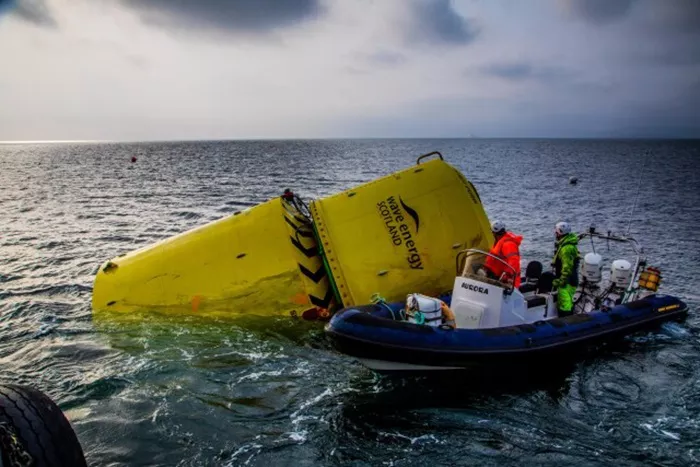The European Union has officially approved a significant €19.6 million ($22 million) initiative aimed at advancing the commercialization of OceanEnergy’s cutting-edge floating wave energy converter. The project, known as Wave Energy Demonstration at Utility Scale to Enable Arrays (WEDUSEA), will see a collaborative effort among 14 industry and academic partners across the UK, Ireland, France, Germany, and Spain, under the coordination of Irish firm OceanEnergy.
This project, partially funded by the EU Horizon Europe Programme and Innovate UK, is poised to move into its next phase. It will feature a demonstration of the 1MW OE35 floating wave energy converter at the European Marine Energy Centre (EMEC) wave energy test site located at Billia Croo, Orkney, Scotland.
WEDUSEA is structured in three distinct phases. The initial phase involves designing and constructing a device tailored for the ocean conditions at EMEC’s Billia Croo site. This will be followed by a two-year demonstration phase, culminating in the final phase of commercialization and dissemination, where the project results will be leveraged for broader industry application.
Prof. Tony Lewis, Chief Technical Officer at OceanEnergy, emphasized the project’s potential impact, stating, “The WEDUSEA project will showcase the trajectory of wave technology towards cost reduction, serving as a crucial step towards scaling up and further industrializing commercial arrays. We envision that the natural energy of the world’s oceans will eventually supply a significant portion of the global grid.”
The OE35, developed by OceanEnergy, is touted as the world’s largest capacity floating wave energy device. The technology operates by floating on the ocean’s surface and harnessing wave pressures through a trapped air volume, which drives a turbine to generate electricity. This electricity will be transmitted to the UK grid via EMEC’s subsea cables.
Prof. Lars Johanning of the University of Plymouth highlighted the project’s meticulous planning and readiness, stating, “The WEDUSEA partnership has diligently ensured that all designs and plans are robust, proving the project’s viability and budget adherence. With EU approval in hand, we are ready to proceed.”
Construction of the wave converter is scheduled to commence in the latter half of 2024, with the demonstration phase set to begin in June 2025.
For further insights into the innovative technologies being tested at EMEC, listen to this episode of the Energy Transitions podcast.
Related topics:
- Envision Energy to Build Europe’s First Green Hydrogen Industrial Park in Spain
- BorgWarner Unveils Cutting-Edge Green Technologies at IAA Transportation 2024
- Cummins Unveils Cutting-Edge Braking Technologies at Automechanika 2024

